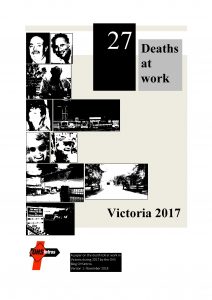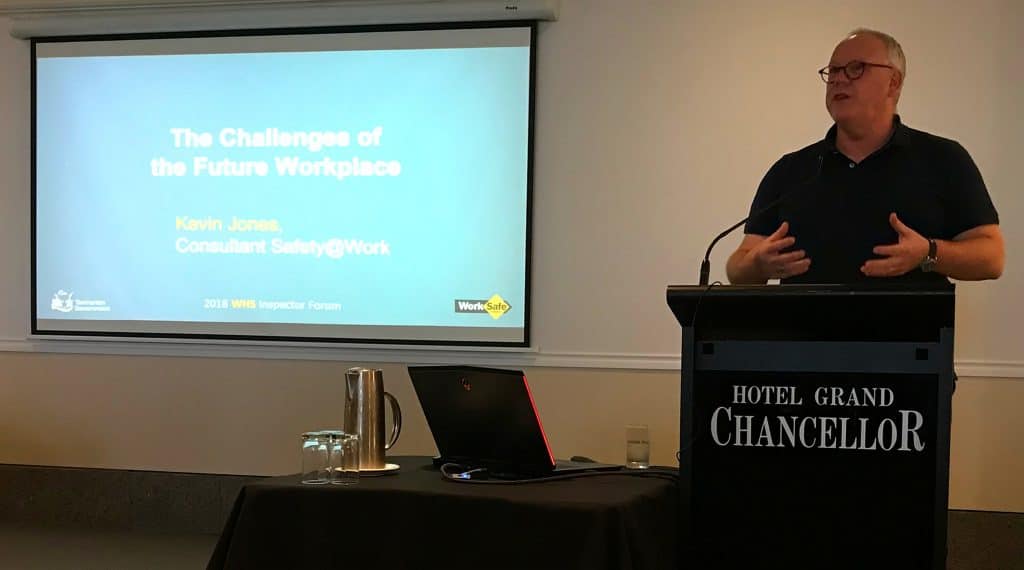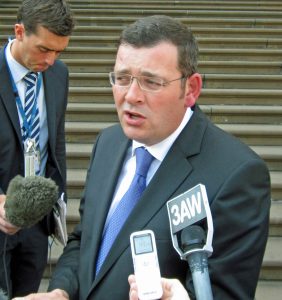 In 2017 the Victorian Government reviewed and revised its
In 2017 the Victorian Government reviewed and revised its
Category: WorkSafe
The Challenges of Future Workplaces – Part 2
 This article is part two of an edited version of a keynote presentation I made at the a special WHS Inspectors Forum organised by WorkSafe Tasmania. The audience comprised inspectors from around Australia and New Zealand. I was asked to be provocative and challenging so posed some questions to the audience about how occupational health and safety (OHS) is managed, regulated and inspected.
This article is part two of an edited version of a keynote presentation I made at the a special WHS Inspectors Forum organised by WorkSafe Tasmania. The audience comprised inspectors from around Australia and New Zealand. I was asked to be provocative and challenging so posed some questions to the audience about how occupational health and safety (OHS) is managed, regulated and inspected.
The audio of the presentation is available at
Share Solutions could be resurrected
 Some readers have asked for more information about the “Share Solutions” program mentioned in a previous article. The initiative started in 1988 but this article is based on the second edition from 1995.
Some readers have asked for more information about the “Share Solutions” program mentioned in a previous article. The initiative started in 1988 but this article is based on the second edition from 1995.
In 1995, pre-internet, the precursor to WorkSafe Victoria, the Health and Safety Organisation Victoria produced a Share Solutions manual (with an unfortunate sex doll-like graphic). This hard copy folders included single page solutions to common workplace hazards. These solutions were submitted usually by those workers or Health and Safety Representatives who had developed a solution to a hazard particular to their workplace. The solutions were shared with the program participants with acknowledgement of the origin. Continue reading “Share Solutions could be resurrected”
Safety radicalism needed for farm safety in Victoria
 The latest paper from OHSIntros has been released, focusing on work-related fatalities in Victoria for 2017. These papers are produced independently but with good analysis. It’s not on the scale of “big data” but it does not need to be.
The latest paper from OHSIntros has been released, focusing on work-related fatalities in Victoria for 2017. These papers are produced independently but with good analysis. It’s not on the scale of “big data” but it does not need to be.
This article looks at the farm deaths data in the report, asks some long-overdue questions and offers radical safety scenarios. Continue reading “Safety radicalism needed for farm safety in Victoria”
The Challenges of Future Workplaces – Part 1
This article is part one of an edited version of a keynote presentation I made at the a special WHS Inspectors Forum organised by WorkSafe Tasmania. The audience comprised inspectors from around Australia and New Zealand. I was asked to be provocative and challenging so posed some questions to the audience about how occupational health and safety (OHS) is managed, regulated and inspected.
The audio of the presentation is available at SoundCloud and Podbean and below.

“The purpose of this session is to provide insight into the future challenges for work health and safety regulators due to changes in the nature of work, the workforce, supply chains, and the social and political environments, and encourage inspectors to consider how the way they do their work may need to change to meet these challenges.”
Be Critical
I encourage you all to analyse what you say, what you are told, what you do and how you do it. Too often we accept information and our situations uncritically and I want you to question everything, including what you read in this article.
What is the “All Victorians Infrastructure Fund”?
ON 22 November 2018, two days before the State Election, the Secretary of the Department of Treasury and Finance released a document called the “Release of costing of election commitment“. Most of the media attention was on the removal of a self-imposed “debt cap” by Treasurer, Tim Pallas, but there is an interesting footnote that seems to involve using some of WorkSafe Victoria’s premium income as a dividend to fund infrastructure.
Attachment A – “Summary of Labor’s 2018 Election Commitments” – lists the following table (figures are in millions):
Footnote 3 says:
What will the ALP do for Victoria on OHS?

The Victorian Branch of the Australian Labor Party has had its 2018 policy platform available online for sometime. Given that the State election is on November 24, 2018 it is timely to look at the ALP’s new, or restated, commitments.
In its section on Occupational Health and Safety (OHS) the ALP claims that its support of WorkSafe Victoria’s
“…behavioural change campaigns has seen a reduction over time in workplace injury and death, however there remain some businesses which continue to show little regard for the safety of their workforce.” (page 17)

